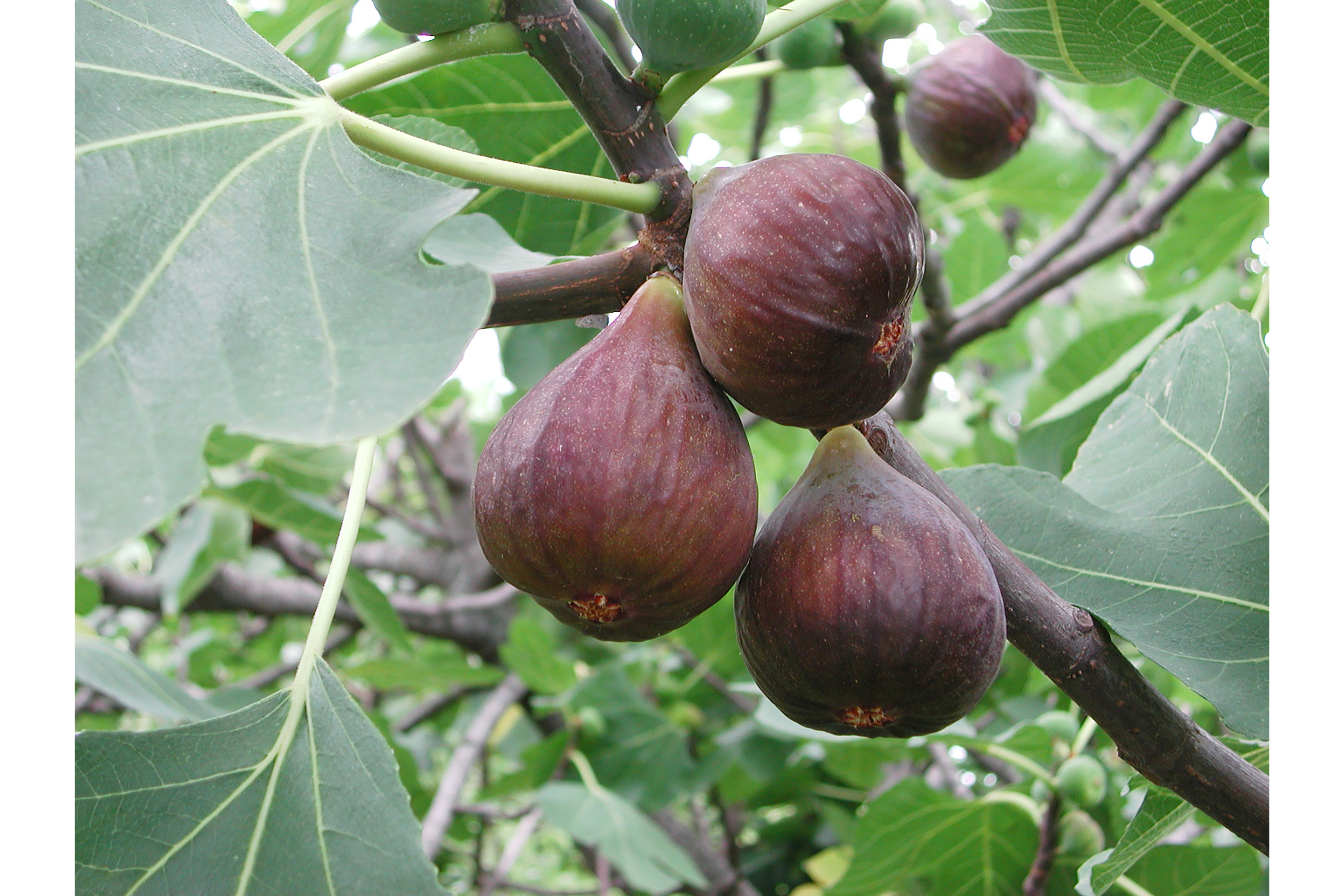Fig tree
(Ficus carica)

Description
Ficus carica, commonly known as the fig tree, is a species of flowering plant in the family Moraceae. The tree is native to the Mediterranean region and Western Asia and has been cultivated for thousands of years for its sweet and nutritious fruit. Today, it is widely grown around the world and valued for its ornamental beauty, as well as its culinary and medicinal properties. Description and Characteristics Ficus carica is a deciduous tree that grows up to 10 meters tall and has a spreading canopy with a diameter of up to 15 meters. The tree has a thick, gray-brown bark and large, lobed leaves that are 12-25 cm long and 10-18 cm wide. The leaves are dark green on the upper surface and lighter green on the underside, with prominent veins and a rough texture. The tree produces a unique type of fruit called a "syconium," which is actually an inverted flower with multiple seeds inside. The fruit is pear-shaped and can be yellow, green, purple, or black when ripe, depending on the cultivar. Cultivation and Propagation Ficus carica is a hardy and adaptable plant that can grow in a range of soil types and climates. It prefers well-drained soil and full sun to partial shade, with average temperatures between 15-35°C. The tree is propagated by cuttings or by grafting onto a rootstock, which ensures that the new tree will have the desirable characteristics of the parent plant. The fig tree is usually propagated in late winter or early spring when the dormant wood is still pliable. The cuttings should be 15-30 cm long and taken from the previous season's growth. The lower leaves should be removed, and the cutting should be dipped in a rooting hormone before being planted in a pot filled with a mixture of sand and peat moss. The cutting should be kept in a warm and humid location and watered regularly until new growth appears. Alternatively, the fig tree can be grafted onto a rootstock to improve its growth and fruiting characteristics. Grafting is done by taking a cutting from the desired cultivar and attaching it to a seedling rootstock of a related species. The two parts are held together until the graft has healed, and the new tree is then planted in the ground. Uses and Benefits Ficus carica is valued for its sweet and nutritious fruit, which is high in fiber, vitamins, and minerals. The fruit can be eaten fresh or dried and used in a variety of dishes, including desserts, jams, and baked goods. The fig tree is also used for medicinal purposes in traditional medicine, with the fruit, leaves, and latex all having various therapeutic properties. The fig tree is also valued for its ornamental beauty and is commonly grown as a landscape tree or potted plant. Its large, lobed leaves and unique fruit make it a striking addition to any garden or indoor space. In addition, the tree is beneficial to the environment as it provides habitat and food for birds and other wildlife. Conclusion Ficus carica is a versatile and valuable plant that has been cultivated for thousands of years for its fruit, ornamental beauty, and medicinal properties. The tree is easy to grow and propagate, making it a popular choice for home gardeners and commercial growers alike. With its sweet and nutritious fruit, striking foliage, and important ecological benefits, the fig tree is truly a plant worth knowing and appreciating.
Taxonomic tree:







